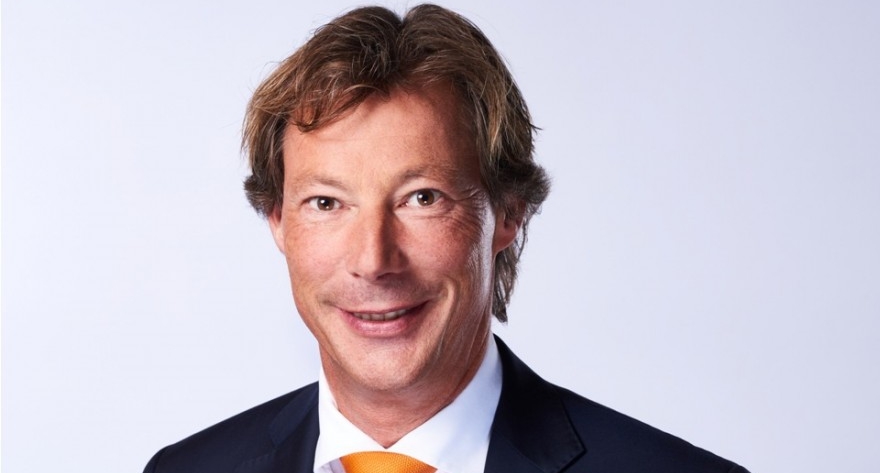HFA looks at cloud-based community platform to provide real-time information
November 21,2017: To be categorised as a perishable centre, a facility must have features such as cool storage, and specially trained handlers, optimising the facility for the specific requirements that come with the handling of perishables

November 21,2017: To be categorised as a perishable centre, a facility must have features such as cool storage, and specially trained handlers, optimising the facility for the specific requirements that come with the handling of perishables, says Bart Pouwels, director Business Development Cargo, Amsterdam Airport Schiphol, in an exclusive interview with Renjini Liza Varghese.
What are the three main challenges that need attention in the handling of flowers and perishables?
Linking flower cargoes with their air cargo information on box level continues to be a challenge for grower countries, and the Holland Flower Alliance (HFA) is investigating how procurement data can link to logistics data (Air Waybill). If you combine them, you have got really, for the entire chain, from manufacturer to the buyer, transparency in the chain.
The HFA is working with local governments in Kenya and the Netherlands to see how we can speed up the digitalisation of the paperwork that governments need to submit for shipments - this includes the inspection process that takes place in the flower industry, e.g., the phyto paperwork that needs to be submitted.
These phyto tests must be done by law to check exports for injurious pests, diseases, noxious weeds, or any contagious conditions which could affect native flora.
Digitisation of the cool chain is a big issue. This is something the HFA is addressing with the development of a Cloud-based platform which all stakeholders can use to monitor the status of shipments via a track and trace function, and are working towards being able to monitor aspects such as temperature.
Quantify the jump witnessed in flower/ fruits exports. And which geographical area would export more perishables into Amsterdam?
The country sending the largest amount of fresh cut flowers to Europe is Kenya, and 90 percent of all Kenya’s exports are bound for the Netherlands. Kenya produces more than 50 percent of all flowers flown by Kenya, Ethiopia, Ecuador, Colombia, and Miami, USA, combined.
The second largest producing country for the Netherlands is Ethiopia. The South American production is equal to 20 percent of the East African production.
The Netherlands is the biggest importer of fresh cut flowers in Europe with 90 percent market share. In Amsterdam, fresh cut flowers represent almost 15 percent of Schiphol’s annual cargo volume.
Elaborate on the infrastructure facilities for perishable handling in the airport?
We have extensive facilities for perishable cargoes in multiple controlled-temperature zones, featuring refrigerated/deep-freezer and heated storage/handling facilities. Many members of the Schiphol Cargo Community have dedicated perishables centres at the airport. A few of these are forwarding and handling companies Kuehne & Nagel, Interfresh, IP Handlers, Panalpina which has recently invested in their perishables operations by acquiring the Dutch perishables agent Airflo, and Hellmann Perishable Logistics, part of Hellmann Worldwide Logistics, which has its dedicated perishables centre at Amsterdam Airport Schiphol.
Last year, Kuehne + Nagel decided to make Amsterdam Airport Schiphol their European perishables hub.
To be categorised as a perishable centre, a facility must have features such as cool storage, and specially trained handlers, optimising the facility for the specific requirements that come with the handling of perishables. Each organisation that deals with perishables at Schiphol has decades of experience.
Throw some light on the technology adaptation in cargo handling. What percent of investments are allocated for technology up-gradation / mechanisation?
For technology to make an improvement to the quality of the cool chain, it must be implemented on a large scale. It must be generic so that each organisation can apply them, across their existing platforms, and connect their own system to their partners’. Cloud-based solutions; track and trace scanners, RFID, and temp loggers can all help us demonstrate the quality of our operations to our shippers, but only when it is rolled out across the whole chain.
This is why the HFA is working on a Cloud-based community platform that will help all stakeholders in the flower supply chain, from the grower to the auction in the Netherlands, have real-time information throughout the chain.
Here’s an example - if the farm updates the platform in real-time with quantity of stems, type of rose etc., and then as soon as the shipment reaches the forwarders’ facility at the airport, they add Air WayBill information, the receiver – whether that be Royal FloraHolland or a handler - can now see exactly which carton boxes are being loaded onto the aircraft in Nairobi. If there is a delay in the flight, the receiving party in the Netherlands knows immediately and is able to adjust their planning to accommodate this.


